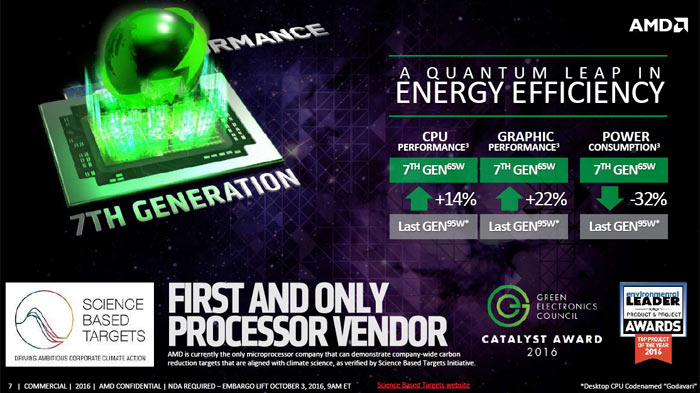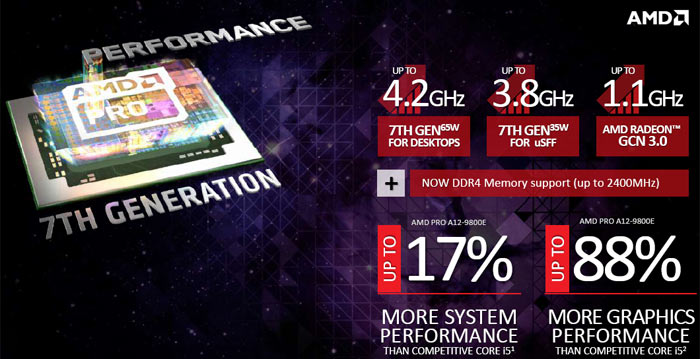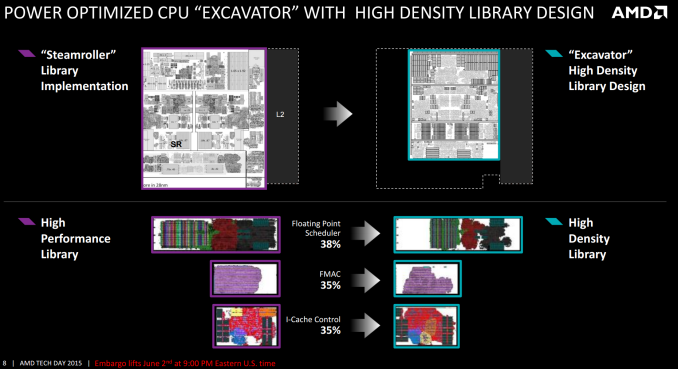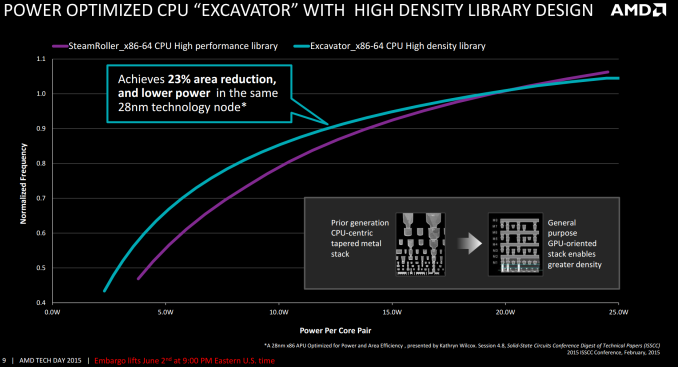http://hexus.net/tech/news/cpu/97564...ors-announced/
AMD last refreshed its Pro series of computer processors back in September 2015, with its enhanced chips based upon Carrizo and Godavari. Today AMD announced its new 7th generation Pro APUs, also known as 'Bristol Ridge Pro' processors. As with previous AMD Pro chips, the new generation brings renewed performance and feature gains alongside enterprise-class reliability and security. AMD hopes to continue the success of the Pro series as since mid-2014 it has enjoyed a 45 per cent uplift in shipments of this range.For the first time AMD will be offering both 65W and 35W APUs as part of the Pro APU range. The 35W parts will be easily recognisable with their 'E' suffix and are meant for the growingly popular ultra-small form factor PC systems. These lower power consumption processors still offer plenty of performance, according to AMD, with clear leadership especially with regards to the integrated GPU.AMD chose to make a direct comparison between its Pro A12-9800E and the competitive Intel Core i5-6500T (with Intel HD Graphics 530) in real-world shipping business systems. In PCMark 8 v2 Home the AMD system scored 3461, while the Intel system scored 2965. That's a 17 per cent improvement on AMD's side. However, I noticed that the comparison AMD system had an SSD while the Intel system used a 5,400rpm HDD. In the perhaps fairer graphics comparison between the same machines AMD's R7 Graphics trounced the Intel HD Graphics 530 in 3DMark 11 Performance tests scoring P3050 against P1622. That's 88 per cent better.










 Reply With Quote
Reply With Quote


 Did you miss the Memo - "28nm: The Last Node of Moore's Law?" Wafer costs have not proved worth it except for ARM chips. If anything has been learned over the last 2 years, 16/14nm and below will become very 'hybrid' in node nature
Did you miss the Memo - "28nm: The Last Node of Moore's Law?" Wafer costs have not proved worth it except for ARM chips. If anything has been learned over the last 2 years, 16/14nm and below will become very 'hybrid' in node nature


 I don't know. AMD seems very happy with the 'Cat' front-end with Excavator cores -- wattage is down, CUs and clocks are up, process is mature. It's the old Temash SoCs on steroids.
I don't know. AMD seems very happy with the 'Cat' front-end with Excavator cores -- wattage is down, CUs and clocks are up, process is mature. It's the old Temash SoCs on steroids.

Bookmarks